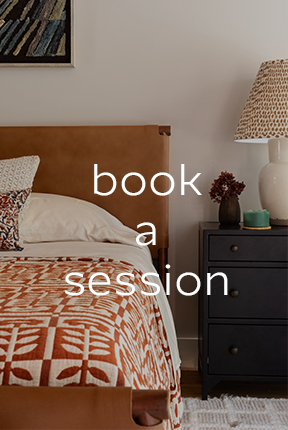Six Ways Interior Design Affects Mood

I often times find myself explaining to people the deeper purpose behind interior design, because it really is more than just throwing a pretty color on the wall and adding a few pillows. I decided to become an interior designer because I wanted to create environments that people could live and work in. Ones that they wanted to spend their life in. For the purpose of this article, I will focus on the home environment and how the design of it affects your mood and mental health-for better or worse! Since my thing is creating environments that inspire, nurture and serve, I’ll start with the moods associated with inspiration.

1. Your home can make you feel happy…
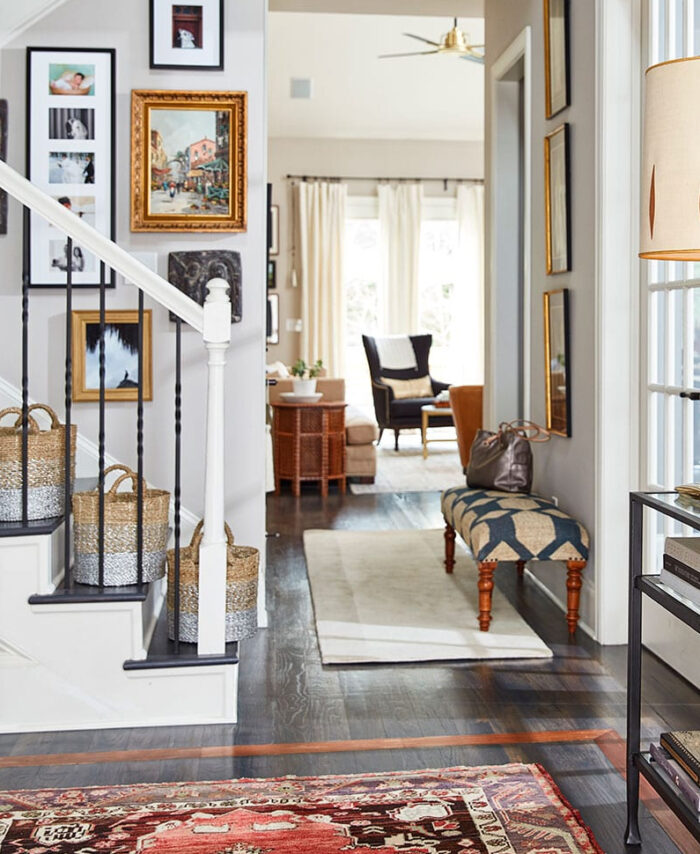
…or it can make you feel sad. Your environment can promote feelings of happiness through color, scents, sounds and objects that have meaning to you. On the flip side, using these tools in the wrong way can just make you sad (womp, womp).
Here are some tips for designing a happier home:
- Paint your rooms based on their purpose. If your bedroom is painted yellow or orange, probably not the best thing to promote sleep or relaxation, which is the primary purpose of a bedroom. So take a hard look at the colors in your rooms. One – do you like them? And two – do they fit the purpose for the room? The psychology behind color is very real, so let’s use what we know to be a tool for our good.
- Add some smelly stuff (the good kind). What scents do you love? If you love the scent of lemon, put a lemon candle or lemon oil in a diffuser in the room and watch how it just brightens up your day.
- Pump up the jams. I don’t think I have to sell you on the power of music. So get a wireless speaker (or plan for audio when you’re building a new home) and play the stuff you love.
- A house is not a happy and inspiring home until you make it yours. Bust out some sentimental objects, put those photographs you love in frames finally, and enjoy those happy feelings every time you look at these things.
2. Your home can make you feel energetic…
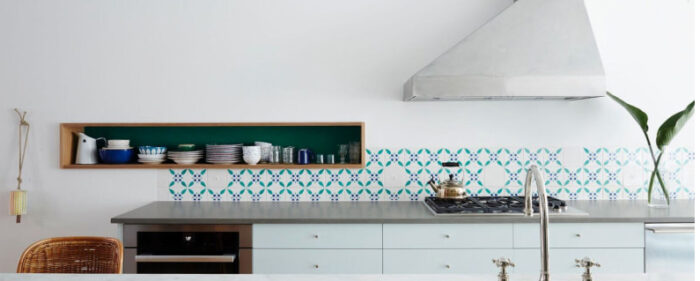
…or it can make you feel tired. Your environment can give you energy or drain your energy through your colors (a lot of these elements overlap), decor, light and layout, among other things. Here are some energy-boosting design tips to rev you up and bring on the inspiration:
- Incorporate some warm tones into your kitchen and office. Again with the color. But seriously, a color that’s all wrong for the space, can zap your energy.
FACT: Several studies have revealed that the color blue lowers heart rate, while red elevates it.
- Decorate with some plants. Studies have shown that incorporating decor that mimics the outdoors will promote energy and boost your mood.
- Swap out some lights or light bulbs. You want to make sure that you have enough light in the room (if you can’t see your food in the dining room, that’s a problem) and that the light is the right color (if your food looks gross because of the light, that’s a problem).
- Re-arrange your furniture. In Feng Shui, they teach the importance of creating good energy flow through a room and between rooms. Having too many “roadblocks” can drain your energy and make a room just feel wrong. Observe how you move throughout a space, and play with different layouts.

3. Your home can make you feel safe…

…or anxious. You should feel safe in your home, but all too often we don’t. Aside from the obvious stuff, like getting a security system or maybe a pet, you should pay attention to things like window treatments, your bedding and location of lights.
- Cover those windows at night. I know window treatments are expensive, but they are well worth the investment. Even with a security system, you can feel like someone is watching if you don’t have a way to cover the windows at night.
- Get a heavier blanket. It turns out, there’s science behind this (https://www.rd.com/health/wellness/why-we-sleep-under-blankets/). Plus, don’t tell me you haven’t felt bulletproof when you pull that blanket up to your chin. It’s purely psychological, but you know what…it works.
- Add a lamp. Even a dark corner can make us uneasy at night, so just add a lamp or light.
4. Your home can be comfortable…
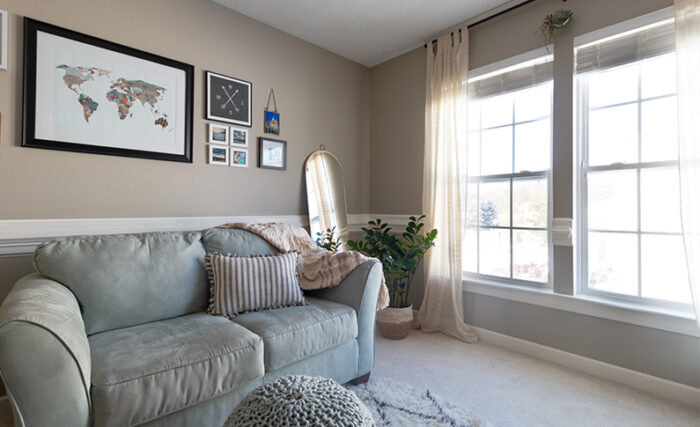
…or it can be very uncomfortable. You want to be able to come home, kick off your shoes (maybe grab a glass of wine) and go…”ahhhhh.” Your furniture definitely factors into this, and so do things like decor and layout.
- Get comfortable furniture. This seems obvious, but I don’t just mean a softer sofa (although that is important). I mean furniture you’re comfortable with. I mean if you have kids and you don’t want to have to worry about them staining the furniture, don’t get white chairs, or get them majorly stain-treated.
- Decorate. With stuff you love. If you ignore the decor and styling portion of a room, you end up with a stark, empty-feeling room that will never be comfortable. So go ahead…decorate. Because it’s important.
- Make the layout easy for you. This may mean smaller or larger furniture in the living room. This may mean making the glasses more accessible in the kitchen. A comfortable room means one where you don’t feel like you have to exert a lot of effort to find a seat…or the wine glasses.

5. Your home can make you feel Calm, Focused & Productive…

…or it can really stress you out. There is enough stress in life without our homes contributing to that stress. Although unfortunately, our homes can stress us out without even knowing it if they are unorganized, messy or don’t include enough natural elements (light, plants, etc.).
- Tidy up. Marie Kondo knows it. You know it. Start with creating a home for everything. Pick something up, look at it, and ask yourself, does this have a home? If not, carve out a place for it or throw it away. This is something you can do little by little and your brain will thank you.
FACT: Being connected to nature lowers blood pressure and cortisol (the stress hormone) levels.
- If you don’t have the option of adding more windows and natural light to the room, bring in some plants. They not only make us less stressed, but they can eliminate toxins in the air. Bonus!
6. Your home can allow you to be welcoming…
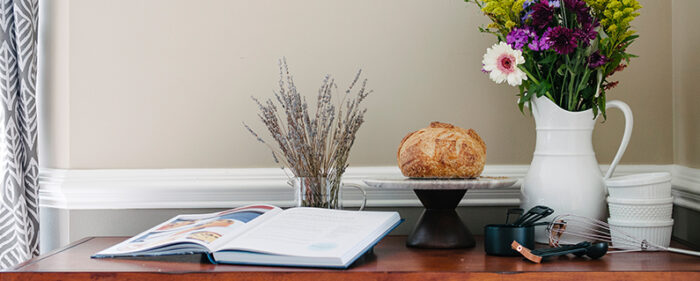
…vs the dreaded “uh oh! so-and-so wants to come over but it looks like this!” One of the biggest contributing factors of happiness (and mood) is relationship. The quality of your relationships, in particular. Your home should serve you in this area, big time. Even if you’re not looking to entertain all the time, having the ability to be open and welcoming to friends, family and guests when you want to is something that has real physical, mental and emotional benefits. After all, you can’t form deep, meaningful relationships if you don’t feel comfortable showing them your home…your most personal space.
- Practice hospitality by having some little items on hand for guests, just in case. You don’t have to have 5 dinner parties a week to keep a package of decaf coffee in the pantry for all those crazy friends who like their coffee without caffeine (just kidding about the crazy thing).
BONUS TIP: Relax and you do you. No one’s life looks like their Instagram account. More often than not, I find that we’re all a work in progress…and a little mess in your life only makes everyone else breathe a sigh of relief, knowing we’re not all that different after all.
